Inspired by unseasonably warm weather last week I decided to get out my dye pots and use up some plant material I had collected – marigolds, onion skins and arbutus bark and savied over the past year or so.
I grow marigolds (tagetes varieties) – mine are short, range in colour from yellow to deep rust and are from seeds that I save every year – for at least 10 years now. I did try the “pot marigold” – calendula – once but they didn’t give any significant colour. I pick the half the flowers every few days over the summer, drying them on trays before storing them in paper bags. If I am ready with spun yarn, I will use the flowers fresh, but enough yarn with enough fresh flowers with enough time – well that doesn’t happen too often. I had about 1/2 paper grocery bag of dried flowers from last year.
The onion skins are from all the onions (we like onions!!) I have cooked with over the past year or so. I keep them in an old onion bag adding a few everytime I use an onion. That has always been enough for my purposes – a few skeins a year. I have ended up with two 10lb onion bags full of skins right now.
Friends who had a place on Lasqueti Island brought me a bag of arbutus bark collected from the ground on their morning walks. About 1/2 shopping bag was still left.
Happily I also found a bag of skeins of my white handspun wool, already mordanted. (I must say to make a day out of just mordanting a pile of yarn then makes for a really happy dye day 🙂
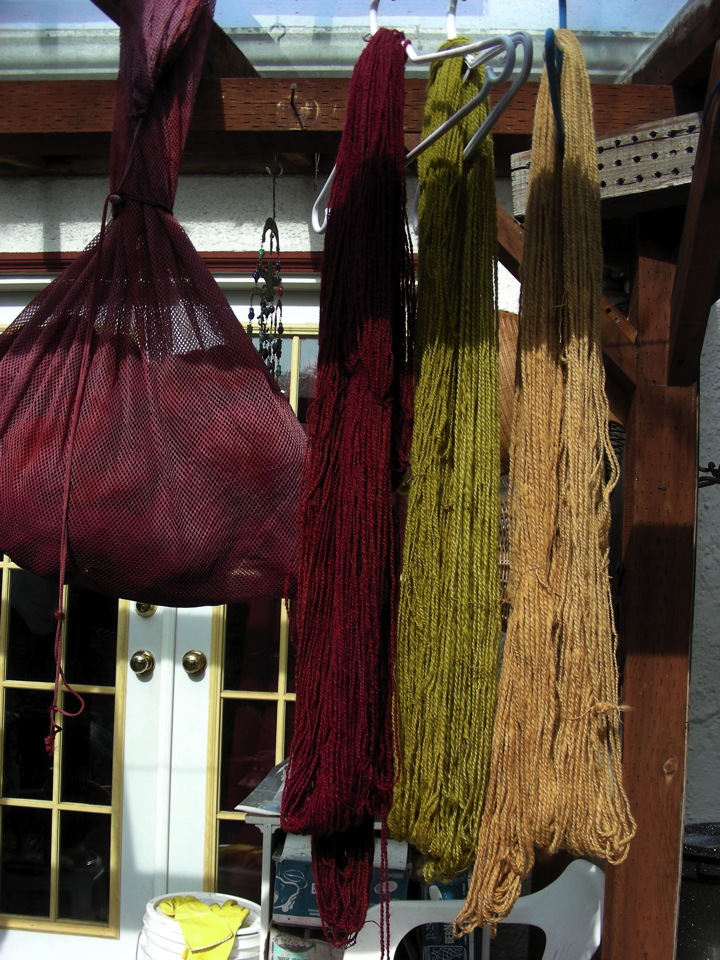
left to right: Lac dye bag of roving, skeins dyed with Lac, skeins dyed with marigold, skeins dyed with arbutus bark 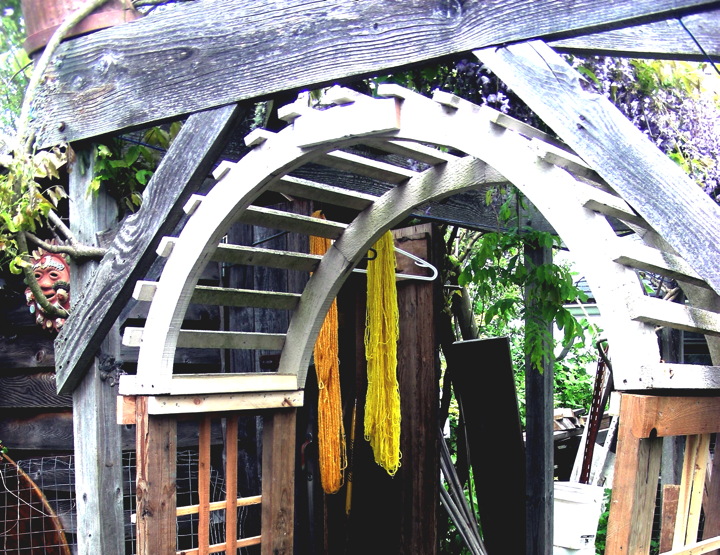
Skein on the left is dyed with onion skins, on the right with weld.
As you can see from the photos, I also got out a container of Lac extract from Maiwa Supply. That is a red dye from Asia and I am hoping to do some experiments with overdying with some yellow (weld) or blue (indigo).
I use a large camp stove outside so that I am not worried about the smells from the vats. I have collected a number of large pots (there are never enough!) to allow for a number of dyes pots at the same time. With plant material, I start with one of the small pots, cover the material with water and simmer (I never boil things any more – too many dark, dreary colours have been the result) for an hour or so. If it is a hot day, I will also leave it in the sun for a few hours too. Then, using a large colander over a large pot, all of the plant material (or most of it) gets strained out leaving only the extracted dye material. Sometimes it is worth repeating the process to get even more out of the material.
Then, in a pot large enough for the yarn or roving to dye, add enough water to cover the yarn, warm it slightly then add the extracted dye (from the last paragraph). Throughly wet the yarn with water about the same termperature as the dye pot then add the wet yarn to the dye pot. Keep the pot warm (say about 160F) for an hour or so then turn off the heat and leave the yarn to sit and cool in the pot. On a hot day, place it in the sun to keep it warm longer. You should stir the yarn around now and then – and check how it is taking the dye. The colours will look deeper in the pot than after they have dried so don’t take things out too soon if you want deep colour. I will often leave things in the dye pot a day or two.
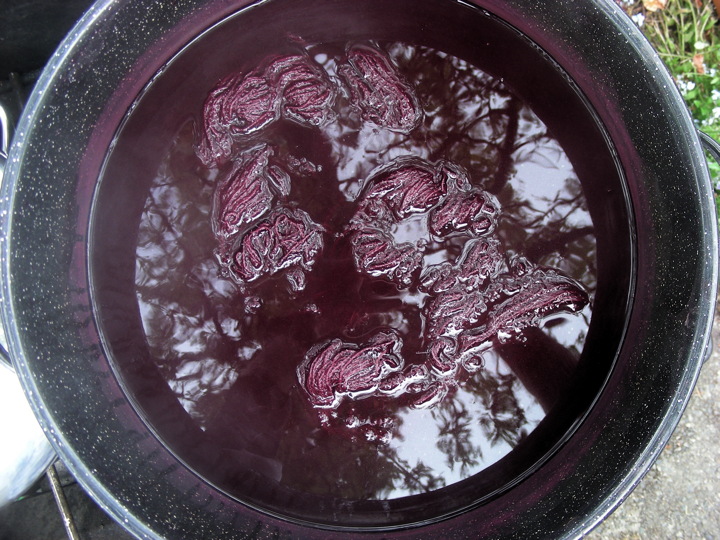
Lac on wool 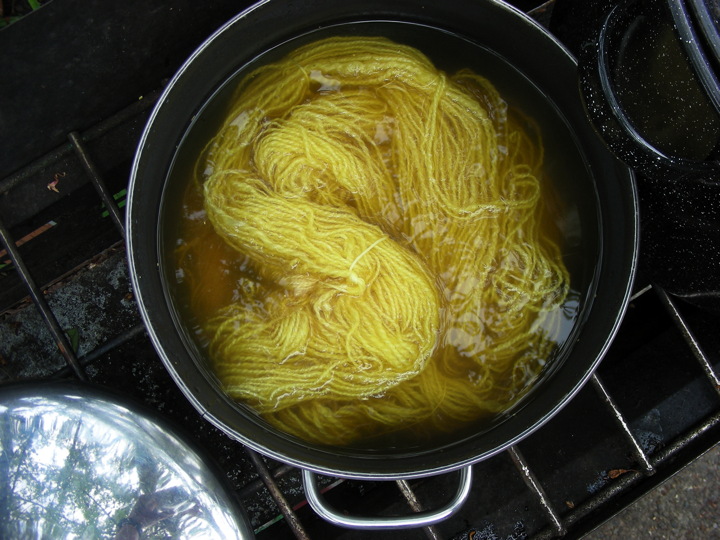
Weld on wool 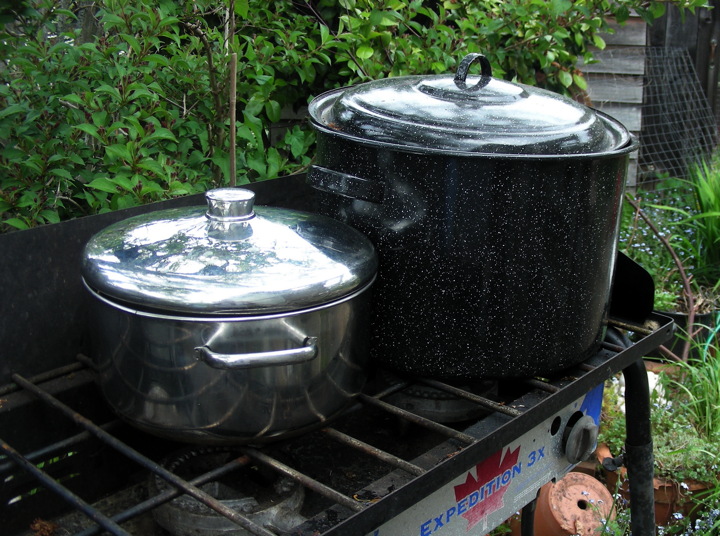
Pots on the stove
I must say that weld was my big surprise – I had a small bag in my cupboard that I cannot remember from whence it came. But, when it is said that weld gives a lovely clear yellow – believe it. The colour is gorgeous. I have now ordered seeds to grow my own since it seems to be easy to do. Here are a list of references I found that informed me about weld:
- https://maiwa.com/collections/weld
- http://www.wildcolours.co.uk/html/weld.html
- https://en.wikipedia.org/wiki/Reseda_luteola
- https://blog.ellistextiles.com/2015/10/02/weld-reseda-luteola/
- https://gradybleu.com/blogs/news/dying-with-weld-a-natural-dye
- http://www.wearingwoad.com/natural-dyeing-yellow-with-weld/ (but comment about temperature is in conflict with wildcolours which says high temperatures will dull the yellow. I ‘ve found that high heat tends to change colours – darker, less pleasant to my taste.)
- http://localcolordyes.com/growing-weld/
Finally, with the marigold, onion skins and arbutus bark dye baths still giving colour I got out some handspun silk that was already mordanted (happy day!) and warmed the dye bath, then put a skein in each of three pickle jars then covered them with the dye liquid. They are now sitting in the sun for a couple of days. My experience has been that silk yarn takes much longer to take up dye that does wool.
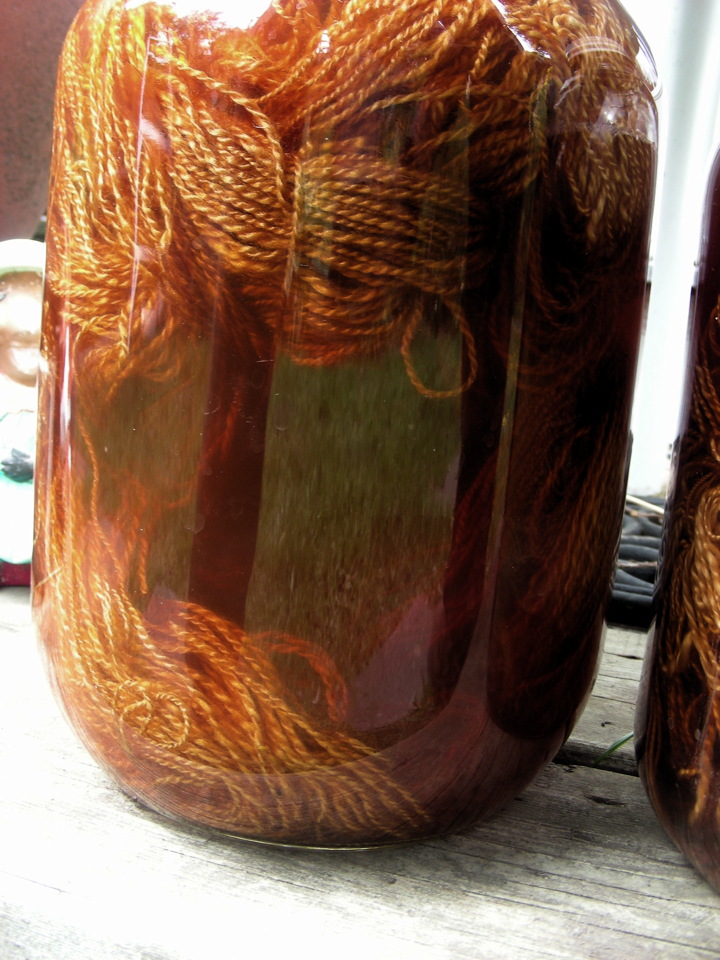
Onion Skins Dye Bath 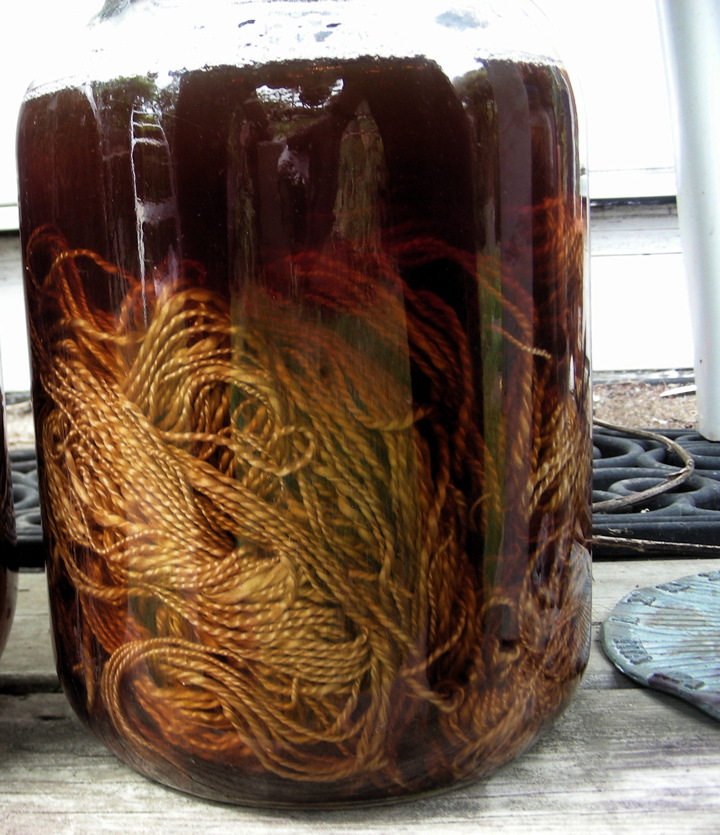
Arbutus Bark Dye Bath 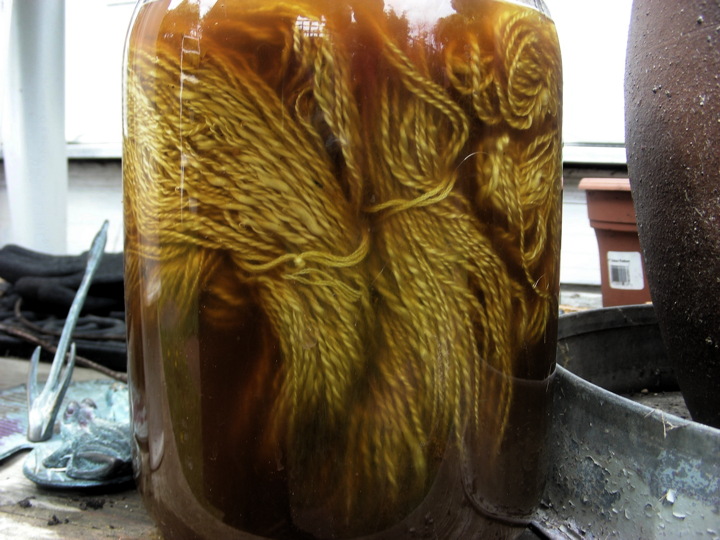
Marigold Dye Bath
Now the weather has cooled so it is not as easy to keep the dye baths warm. So it is back to the loom for a little indoor work.
